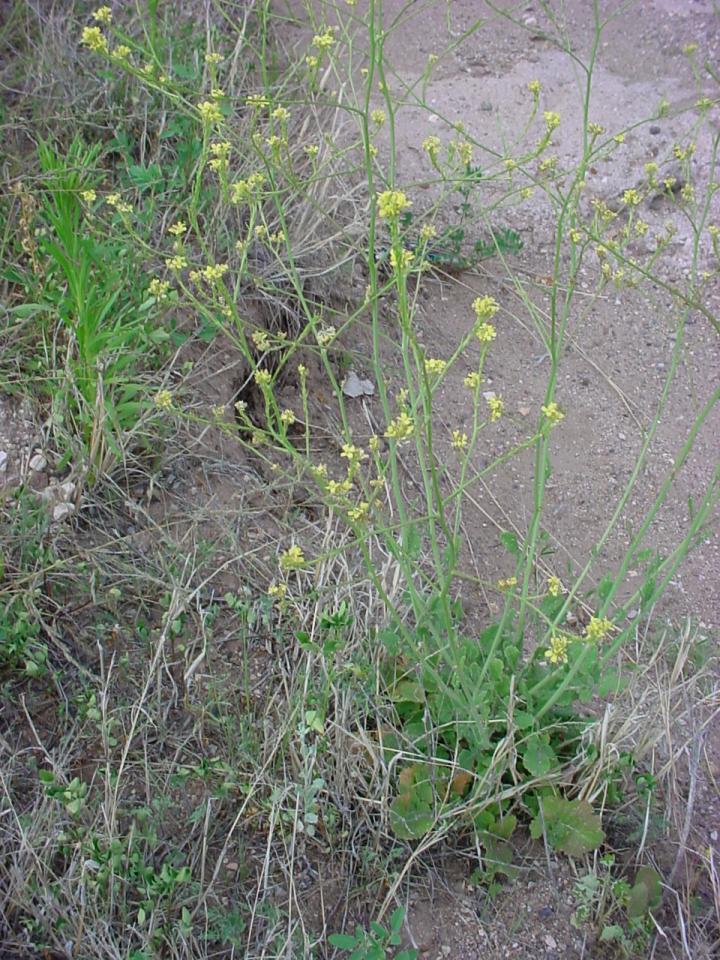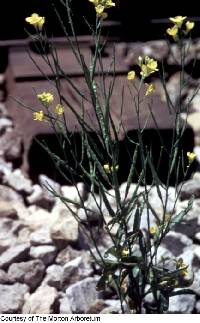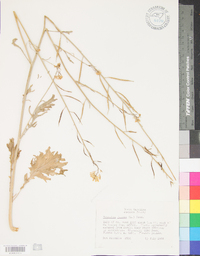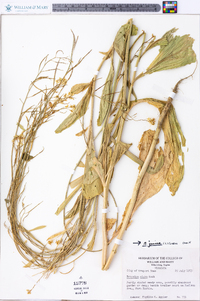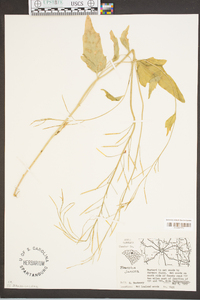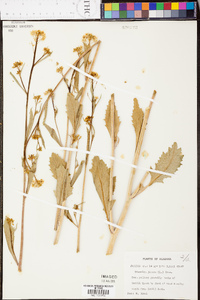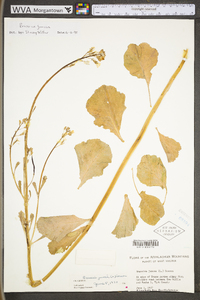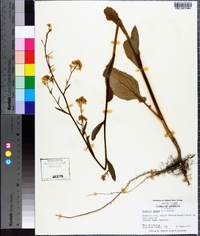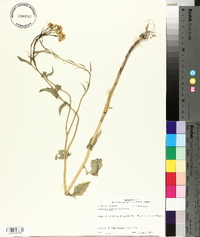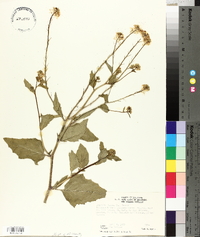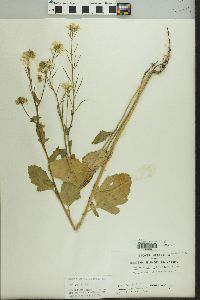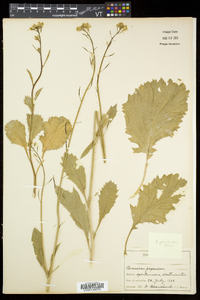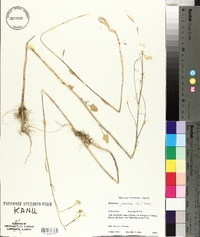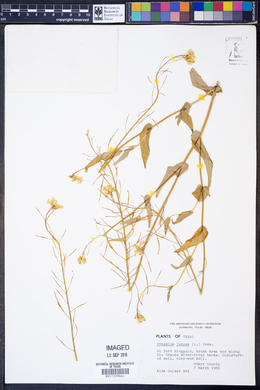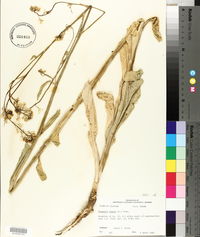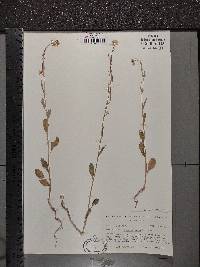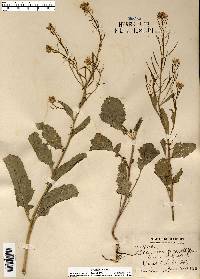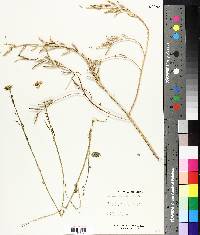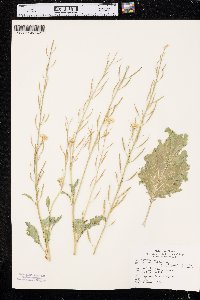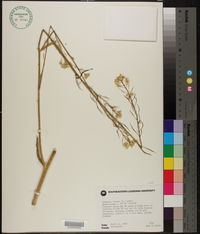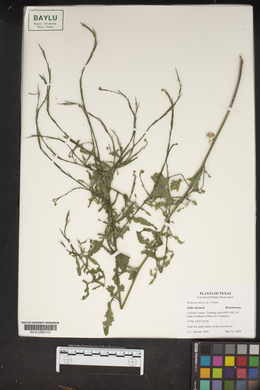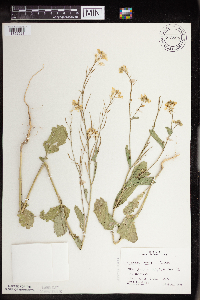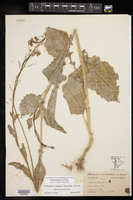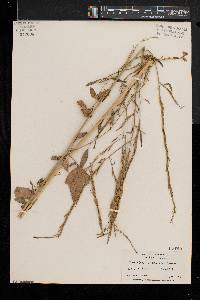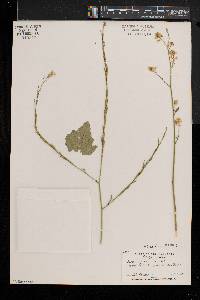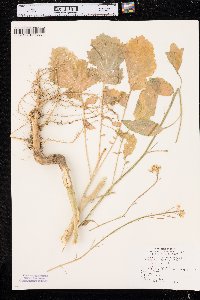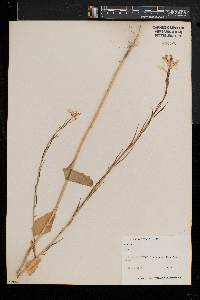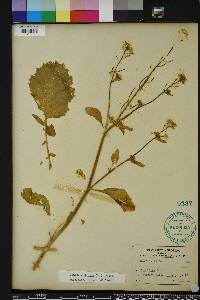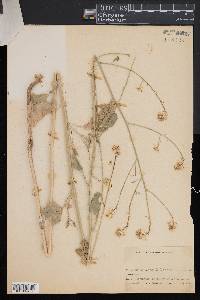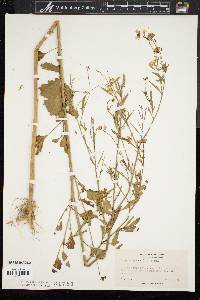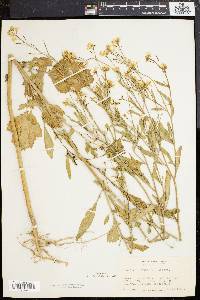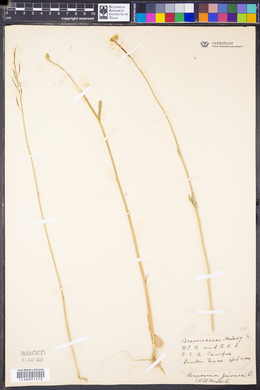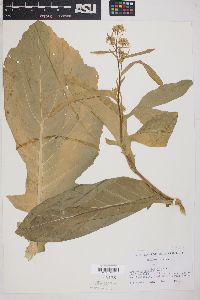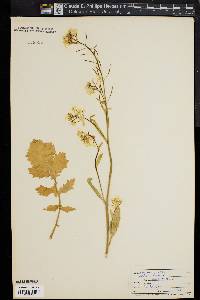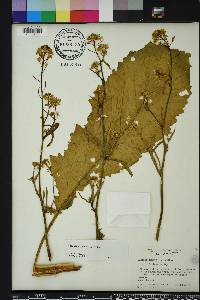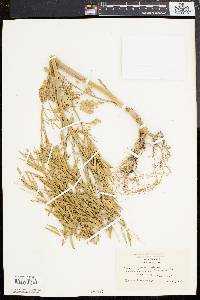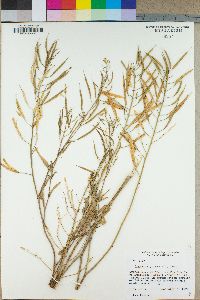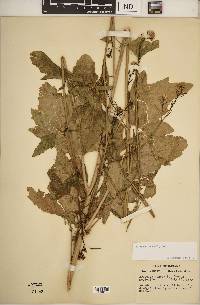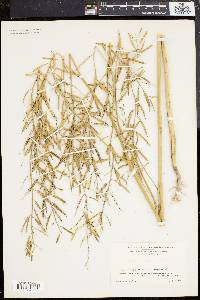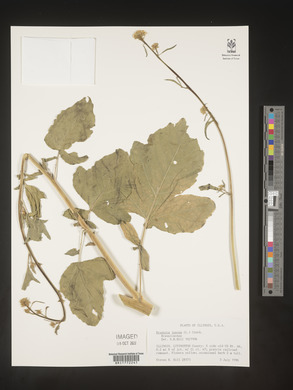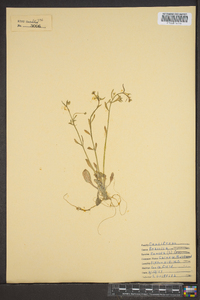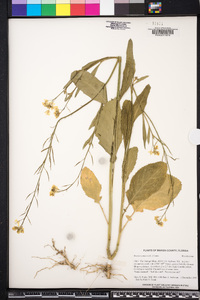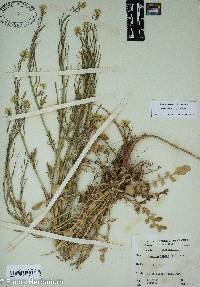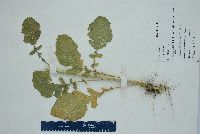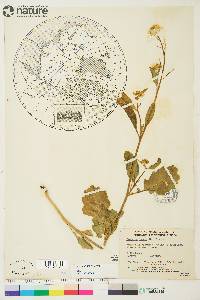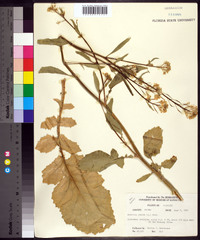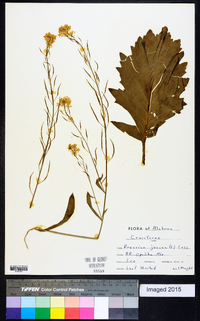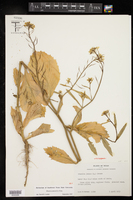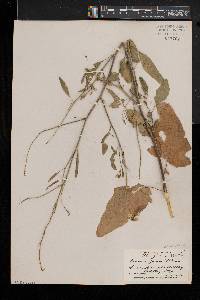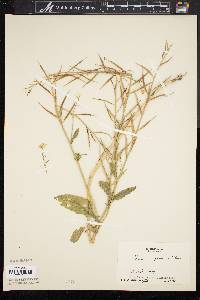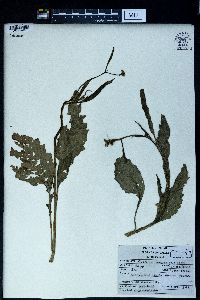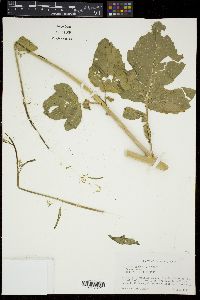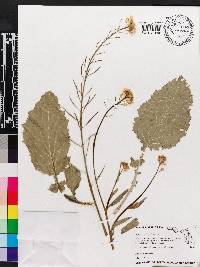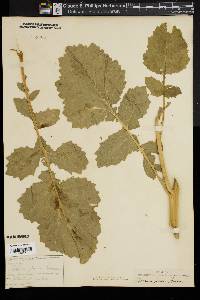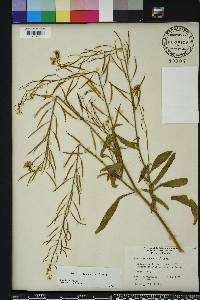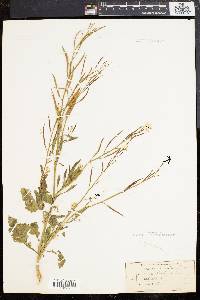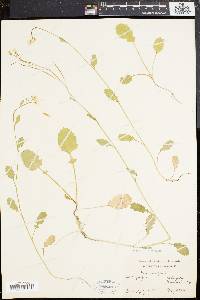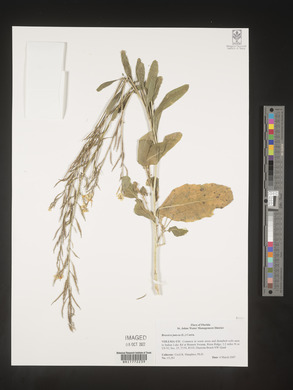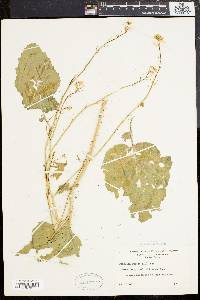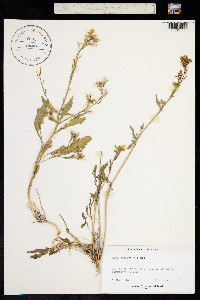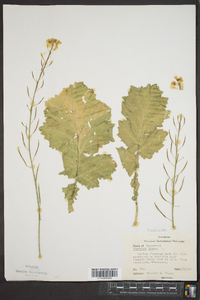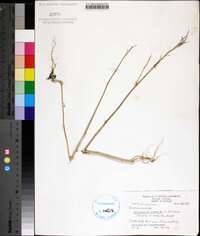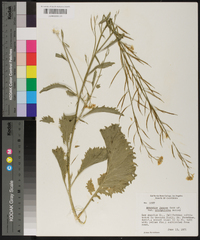
|
|
|
|
Family: Brassicaceae
Chinese Mustard, more...India mustard, Indian mustard, brown mustard
[Brassica besseriana Andrz. ex Trautv., moreBrassica cernua (Thunb.) F. B. Forbes & Hemsl., Brassica integrifolia Rupr., Brassica japonica Thunb., Brassica juncea var. crispifolia Bailey, Brassica juncea var. foliosa , Brassica juncea var. japonica (Thunb.) Bailey, Brassica juncea var. juncea (L.) Czern., Brassica willdenowii Boiss., Sinapis brassicata L., Sinapis juncea L., Sinapis ramosa Roxb. ex Fleming] |
Annuals; (± glaucous), ± glabrous. Stems branched distally, 2-10 dm. Basal leaves (early deciduous); petiole (1-)2-8(-15) cm; blade pinnatifid to pinnately lobed, (4-)6-30(-80) cm × 15-150(-280) mm, lobes 1-3 each side. Cauline leaves usually shortly petiolate, rarely sessile; blade (oblong or lanceolate, reduced in size distally), base tapered or cuneate, not auriculate or amplexicaul, (margins dentate to lobed). Racemes not paniculately branched. Fruiting pedicels spreading to divaricately ascending, (slender), (5-)10-15(-20) mm. Flowers: sepals (3.5-)4-6(-7) × 1-1.7 mm; petals pale yellow, ovate to obovate, (7-)9-13 × 5-7.5 mm, claw 3-6 mm, apex rounded or emarginate; filaments 4-7 mm; anthers 1.5-2 mm. Fruits (sessile); spreading to divaricately ascending to nearly erect (not appressed to rachis), torulose, subcylindrical or somewhat flattened, (2-)3-5(-6) cm × 2-5 mm; valvular segment with 6-15(-20) seeds per locule, (1.5-)2-4.5 cm, terminal segment seedless (conic), (4-)5-10(-15) mm, (tapering to slender style). Seeds brown or yellow, 1.2-2 mm diam.; seed coat finely reticulate-alveolate, not mucilaginous when wetted. 2n = 36. Flowering May-Sep. Roadsides, disturbed areas, waste places, cultivated and abandoned fields, garden escape from cultivation; 0-3000 m; introduced; Alta., B.C., Man., N.B., Nfld. and Labr., N.W.T., N.S., Ont., P.E.I., Que., Sask.; Ala., Alaska, Ariz., Ark., Calif., Colo., Conn., Del., D.C., Fla., Ga., Idaho, Ill., Ind., Iowa, Kans., Ky., La., Maine, Md., Mass., Mich., Minn., Miss., Mo., Mont., Nebr., Nev., N.H., N.J., N.Mex., N.Y., N.C., N.Dak., Ohio, Okla., Oreg., Pa., R.I., S.C., S.Dak., Tenn., Tex., Utah, Vt., Va., Wash., W.Va., Wis., Wyo.; Europe; Asia; Africa; introduced also in Mexico, West Indies, Central America, South America, Australia. Brassica juncea is cultivated in North America primarily as a vegetable and condiment, and is currently being developed as an oilseed crop in western Canada. Its greatest diversity of forms occurs in Asia, where the species is widely cultivated as a vegetable and as an oilseed crop (I. A. Al-Shehbaz 1985). Two main variants are distinguished on the basis of seed color: oriental mustard is yellow-seeded, and brown or Indian mustard is brown-seeded. The species is an allotetraploid derived from hybridization between B. nigra (n = 8) and B. rapa (n = 10). Its center of origin is uncertain but is most likely the Middle East, with possibly independent multiple origins within overlapping ranges of the putative parental taxa (S. I. Warwick and A. Francis 1994). Specimens from Delaware, District of Columbia, and Mississippi have not been observed, but are still listed here.
Annual herb 30 cm - 1 m tall Flowers: in branched clusters, yellow, 1 - 1.4 cm wide. Petals four. Stamens six. Fruit: a narrow pod, ascending, 1.5 - 4 cm long, roundish in cross-section, with a beak. Seeds 2 mm long, conspicuously net-veined. Lower leaves: pinnately divided, stalked, 10 - 20 cm long, toothed. Upper leaves: alternate, stalkless or nearly so, not clasping, smaller than lower leaves, lance-shaped to linear, mostly non-toothed. Similar species: Brassica juncea and B. nigra are the only two Brassica species in the Chicago Region without leaves that are clasping at the base. Brassica nigra is otherwise similar, but it is more or less hairy and not covered with a waxy coating (glaucous). Flowering: late May to early October Habitat and ecology: Introduced from Eurasia. A fairly frequent weed in waste ground and on dumps. Also found on railroad ballast. Occurence in the Chicago region: non-native Etymology: Brassica is the Latin word for cabbage. Juncea means rush-like. Author: The Morton Arboretum Glabrous, often glaucous annual 3-10 dm; lower lvs to 2 dm, pinnatifid and dentate, the upper progressively reduced, short-petioled or sessile; fls 12-15 mm wide; mature pedicels ascending, 10-15 mm; frs ascending, subterete, 1.5-4 cm; seeds 2 mm, conspicuously and evenly reticulate; 2n=36. Native of Asia, established as a weed throughout our range and w. to the Pacific. June-Oct. Gleason, Henry A. & Cronquist, Arthur J. 1991. Manual of vascular plants of northeastern United States and adjacent Canada. lxxv + 910 pp. ©The New York Botanical Garden. All rights reserved. Used by permission. From Flora of Indiana (1940) by Charles C. Deam There are two reports of this weed and I have specimens from three counties. I have always very much disliked the introduced species of crucifers and have neglected to collect them. If I had appreciated the necessity of collecting these weeds, no doubt my records would be more numerous. ...... Indiana Coefficient of Conservatism: C = null, non-native Wetland Indicator Status: UPL |
|
|
|
This project was made possible in part by the Institute of Museum and Library Services [MG-70-19-0057-19].
Powered by Symbiota

